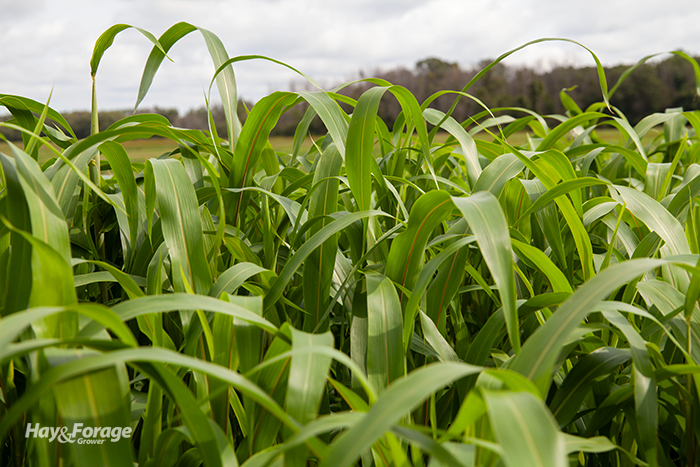Summer annuals buffer rain delays |
| By Amber Friedrichsen, Managing Editor |
|
|
 So far this summer, many Midwesterners have had to sit on the sidelines of saturated crop fields. An abundance of rainfall has delayed hay cuttings, and without a solid stretch of dry days, some farmers are still struggling to get all of their corn planted. According to Matt Oehmican with Short Lane Ag Supply, this type of “train-wreck” weather is one of the primary factors that drives dairy producers to implement alternative forages. In the latest episode of University of Wisconsin-Madison Division of Extension’s “Field Notes” podcast, Oehmican and Yoana Newman discuss how to select and harvest summer annuals to fill feed gaps. Consider the cut schedule Newman, a forage specialist with the University of Wisconsin-River Falls, says sorghum, sorghum-sudangrass, and pearl millet are staple species in the Badger State. Although these drought-tolerant crops outshine other forages under dry conditions, they may also have some merit in systems where excess rainfall has curtailed corn planting this year. Sorghum is best suited for single-cut systems, and Newman said these plants can be harvested at a short height to maximize forage yield since regrowth is not the goal. In addition to conventional varieties, brown midrib (BMR) sorghum has lower lignin content and higher fiber digestibility, which gives it an edge in dairy diets. Sorghum-sudangrass and pearl millet, on the other hand, may be more effective in multi-cut systems, depending on the planting date. Newman noted this approach can generate greater yields and better forage quality across all cuttings compared to a single-cut system, although multiple harvests require more time and labor. Oehmican added that a more diverse mix of warm-season species that includes legumes, small grains, and/or brassicas can meet a wider range of expectations, including those for grazing. With that said, defining the end-use for alternative forages is the first step in determining what species to plant. Soil and fertility factors Soil texture is another consideration for summer annual selection. Newman stated sorghum species don’t like wet feet. Likewise, pearl millet is less tolerant of heavy textured soils. In this case, Oehmican suggested giving Japanese millet a try. He mentioned Italian ryegrass as another option that is relatively easy to incorporate into dairy rations. Regardless of the type of forage, fertilization will likely be necessary to maximize yields. “You have to remember those plants have to build tissue, they need good cell structure, and they need a lot of energy to get yield and quality,” Oehmican said. “If you skimp out on that fertility management, you are not getting 100% value.” Potassium is especially critical for plant tissue development and cell structure, but it is a nutrient that Oehmican said many producers overlook, especially for summer annuals that are cut more than once. Other macronutrients like nitrogen and sulfur can be critical to optimize forage yield and quality, and nutrients that are removed from the field when plants are mechanically harvested must be replaced. Speaking of mechanical harvest, Oehmican pointed out that summer annual selection could ultimately come down to the planting and harvest equipment that is available. In years like this one when farmers must secure feed supplies despite an unpredictable forecast, the best forage option may be the one that requires the least amount of experimentation — and time — to grow. “A lot of times it comes down to your access to equipment and what kind of time you have,” he said. “I lean on what the farmer has had experience working with, because when it’s crunch time, there needs to be an element of user-friendliness.” |
